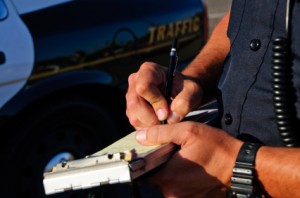 Are you a victim of a Speed Trap? Did a police officer set up an illegal ambush to catch you driving above the legal speed limit and write you a speeding ticket?
Are you a victim of a Speed Trap? Did a police officer set up an illegal ambush to catch you driving above the legal speed limit and write you a speeding ticket?
We get at least five phone calls a week complaining about police injustice and California Highway Patrol Speed Traps. Sometimes these complaints are justified but most of the time they are not.
What is a Speed Trap?
California Vehicle Code 40802 (a) defines a Speed Trap in two ways:
- “A particular section of a highway measured as to distance and with boundaries marked, designated, or otherwise determined in order that the speed of a vehicle may be calculated by securing the time it takes the vehicle to travel the known distance;
- For purposes of this section, a local street or road is one that is functionally classified as “local” on the “California Road System Maps,” that are approved by the Federal Highway Administration and maintained by the Department of Transportation. When a street or road does not appear on the “California Road System Maps,” it may be defined as a “local street or road” if it primarily provides access to abutting residential property and meets the following three conditions:
- Roadway width of not more than 40 feet.
- Not more than one-half of a mile of uninterrupted length. Interruptions shall include official traffic control signals as defined in Section 445.
- Not more than one traffic lane in each direction.
As confusing as that sounds, it is relatively easy to untangle.
Making Sense of The Legal Definition
First, a Speed Trap cannot take place on a Federal Highway with a Maximum Speed Zone (eg., 55, 65 or 70 mph). It must take place on a surface or “local” street.
Quite often police officers use what’s called, “Visual Estimation of Speed” to determine how fast someone is allegedly driving. One of the ways they do this is to predetermine the distance between two fixed points and count how many seconds it took for a particular vehicle to travel between those two fixed points. It is a time and distance calculation and according to California Vehicle Code 40801, completely illegal.
Second, there must be an “up to date” Engineering and Traffic Survey for that particular section of road. Most police officers use Radar, Laser or Lidar on basic (surface/local street) speeding tickets (CVC 22350). Whenever a police officer comes to trial, he or she must bring in an Engineering and Traffic Survey that is not older that five years. If the police officer has had recent radar training, it can extend the life of the Survey out to 7 years.
You’re Not Guilty Yet
Remember, traffic tickets are Criminal Proceedings. You are innocent until proven guilty. It is not your burden to subpoena or provide this Survey. It is the police officer’s job to not only provide this survey, but to also bring in a Radar, Laser or Lidar Certificate demonstrating that they have successfully completed the required coursework. If they fail to do this, then you may have a decent Speed Trap Defense.
If you can provide evidence to the court that you are indeed a victim of a Speed Trap, then the police officer in question becomes incompetent as a witness (CVC 40805) and the court loses its jurisdiction to “render a judgment of conviction” (CVC 40805).
Hopefully this posting has helped you understand that you can fight and win your speeding ticket. Just remember that you do not have to prove to the court that you are innocent, the state has to prove you guilty beyond reasonable doubt.
Scott Desind
Latest posts by Scott Desind (see all)
- How to Request the County Seat and Fight Your California Traffic Ticket - May 21, 2023
- Don’t Even Touch That Cell Phone - July 13, 2022
- Innocent Until Proven Guilty - March 2, 2020

